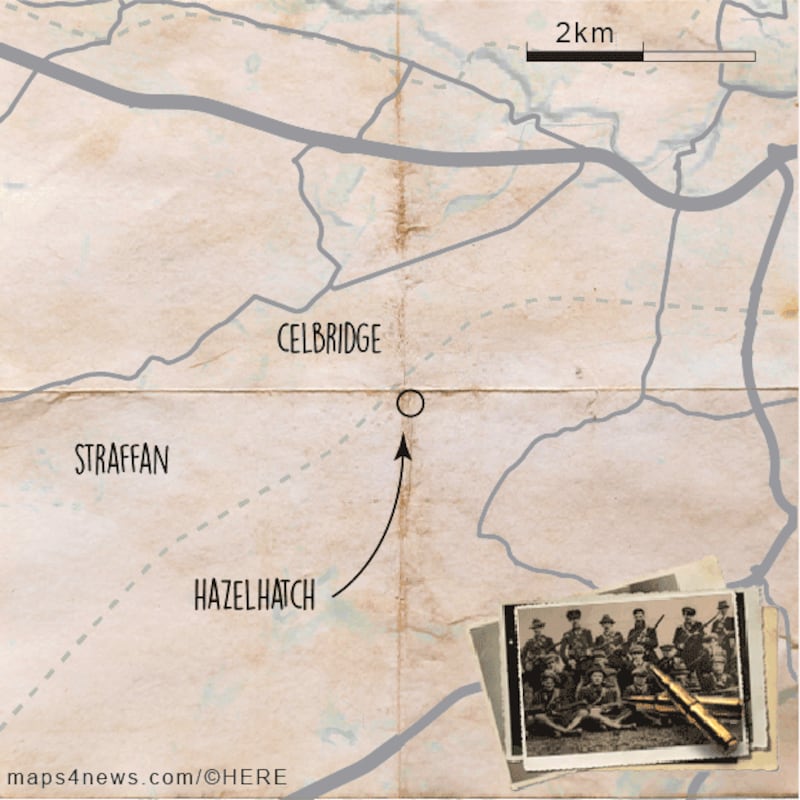County: Kildare
Incident: During the Civil War, 1st battalion (Leixlip) attempts to capture Baldonnel Aerodrome
Date: November 1922
During the Civil War, an anti-Treaty company from the Leixlip and Celbridge area was among the most active against the Free State forces.
From the outbreak of the Civil War in June 1922 until December 1922, a small number of men were engaged in activities to disrupt the movements of government.
Kildare was relatively quiet during the War of Independence, with the presence of the largest military barracks outside Dublin at the Curragh mitigating against large-scale engagements in the county.
That changed after the British left in early 1922. Men under the command of Patrick Mullaney, a schoolteacher from Co Mayo, sought to disrupt the vital communications lines that run through the county to the south and west of Ireland.
An account of their activities is given in the Brigade Activity Files related to 1 Meath Brigade, 1 Eastern Division, which also included east Kildare.
The operations of the 3rd battalion during the Civil War included the blowing up of the railway at Hazelhatch, which links to the trains going south, and at Maynooth, to the trains going west.
In the activities of the 1st battalion (Leixlip) area, Mullaney records that his men engaged in the blowing up of an (unnamed) railway bridge which had been repaired by the railway company.
“It was found necessary to blow it up again as this was being used by military to take troops to other parts of the country from city.”

Disaster struck his column in early 1923, when his men were cornered by Free State troops. It followed an audacious attempt to capture Baldonnel Aerodrome in south Dublin in November 1922.
The 3rd battalion reports (1 Meath Brigade, 1 Eastern Division) that the attack was called off after two mobilisations. No reason is given, but later a statement given to the Bureau of Military History by Lieut James Dunne alludes to a reluctance on the part of the anti-Treaty IRA in Dublin to participate in the raid. "As only 20 men turned up from Dublin, Todd Andrews decided to call off the operation."
However, at the third attempt, Mullaney managed to acquire a Lewis machine gun and some rifles from Baldonnel through a National Army soldier who had switched sides, but again the assault was not carried out because of the reluctance of the Dublin Brigade to be involved.
Mullaney’s column captured some National Army soldiers and took them to Grangewilliam House, a stately home in the area they had commandeered as their headquarters.
The column was finally captured at Pike's Bridge after a fight with National Army forces which lasted for several hours. One National Army soldier, Private Joseph Moran, was killed.
Mullaney's entry in the Brigade Activity Reports is brief and to the point and conceals a lot more than it says. Writing in red ink (the rest of his entries are in black ink), he states: "With regards to this and the taking of Lewis gun and rifles from Baldonnell, I think it unnecessary to give names as all were interned for long enough and five were executed."
The five who were executed on January 9th, 1923, by firing squad had all been National Army soldiers who deserted to the IRA.
They were Cpl Leo Dowling (18), Cpl Sylvester Heaney (19), Private Anthony O'Reilly (age unknown), Private Lawrence Sheehy (21) and Private Terence Brady (18). They were among 77 anti-Treaty men who were executed by the Free State Government during the Civil War.
See also:
[ 1st Meath Brigade, 1st Eastern DivisionOpens in new window ]










